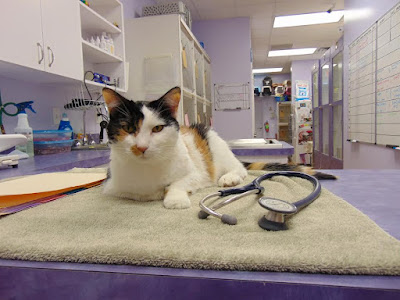Recently, many pet owners have started spaying their female cats. However, some are still unsure if they should spay their pets. Today, let's join the Cat and Dog Blog to learn more about spaying female cats.
1. Why Should Female Cats Be Spayed?
1.1. Spaying Increases Health and Lifespan
According to a study at Banfield Pet Hospitals in the US, based on research on 460,000 cats, spayed female cats live 39% longer than unspayed cats, and this rate for males is 62%.
Additionally, spaying improves the cat's quality of life. Female cats in heat will not display behaviors such as yowling or wandering off to find mates, which can disrupt both the cat’s and the owner’s life. Without spaying, mother cats will become pregnant repeatedly, leading to exhaustion and faster aging, preventing them from enjoying life.
Spayed female cats are also at lower risk of common cat diseases.
1.2. Reduces Annoying Behaviors
Spaying early reduces aggressive, dirty, or confrontational behaviors between cats. Two common issues in unspayed female cats are persistent yowling, especially during mating season, which can disturb both you and your neighbors, and aggressive behavior like climbing or not obeying as usual. Spaying resolves 90% of these problems.
1.3. Cuts Down on Care and Maintenance Costs
Spaying significantly reduces future costs. Early spaying minimizes the risks of diseases such as cancer and pyometra, which are costly and dangerous for pets. Unspayed cats can become aggressive and fight, causing injuries and resulting in expensive treatments.
1.4. Reduces the Strain of Feral Cat Populations
Without early spaying, the number of kittens born increases. According to Animal Rescue Professional, one pair of cats can produce 420,000 kittens in 7 years, leading to a large number of feral cats. These feral cats are not only uncared for but also increase the risk of disease transmission to pet cats. Therefore, if you do not intend to raise kittens, it is best to spay your cat promptly.
2. When is the Best Time to Spay a Female Cat?
According to veterinarians, the ideal time is when the cat has completed the necessary vaccinations and is mature enough to endure and recover well from anesthesia and surgery. This is also the time when the cat has its first heat cycle, making it timely for spaying.
To get accurate information about your cat's health status and whether it is time for spaying, you should consult a veterinarian.
3. How is Spaying Done?
The cat will be taken to the hospital for a minor surgery lasting 30 minutes to an hour. This is a routine surgery performed under general anesthesia.
During the spaying process, surgery will be conducted in a 100% sterile environment (no antibiotics needed) with safe and modern anesthetics. Blood tests are done beforehand to ensure the cat is healthy and suitable for the procedure.
Pain medication and intravenous fluids will be administered during surgery and recovery.
A small incision is made below the navel (midline approach). The skin is closed with intradermal sutures, meaning no external stitches, and they will dissolve over time.
After surgery, the cat will be closely monitored until it is healthy enough to go home safely.
4. Important Considerations for Pre- and Post-Spaying Care
4.1. Before Spaying
- Ensure your cat is fully vaccinated according to schedule. Full vaccination helps the cat have a healthy condition and good resistance for the surgery.
- Choose a reputable clinic. The most important thing is selecting a reliable veterinary hospital. Check for professionalism, quality reviews, and understand the clinic's procedures.
- Clean your cat thoroughly before surgery to prevent infections.
- Do not feed your cat 8 to 9 hours before surgery.
4.2. After Spaying
- Depending on the cat's condition, recovery may be quick or include loss of appetite, which is normal.
- Cats should rest at the clinic for 1-2 hours for monitoring before going home.
- Provide a comfortable, quiet place for your cat, with food and water nearby.
- Do not bathe the cat after surgery to allow the wound to heal. Keep the environment dry and clean.
- Follow up with the veterinarian as scheduled to check the incision.
5. Conclusion
Spaying female cats is a sensible choice with undeniable benefits. The above information provides insights into spaying female cats. The Cat and Dog Blog is happy to offer knowledge about pets. Enjoy your reading time!



